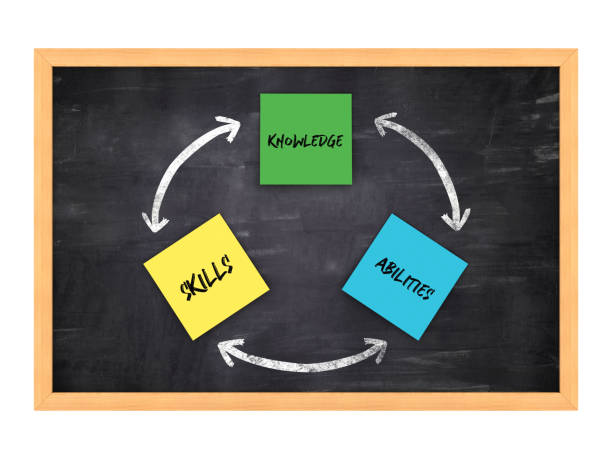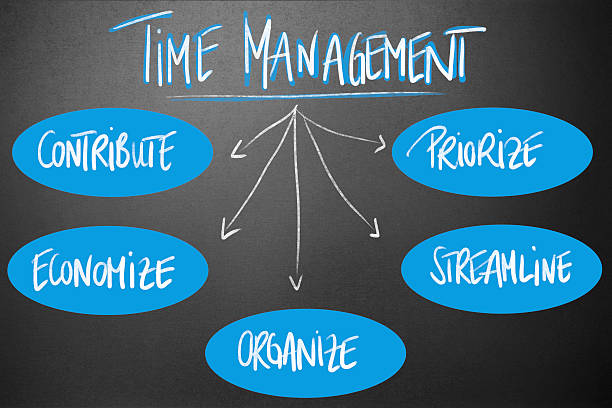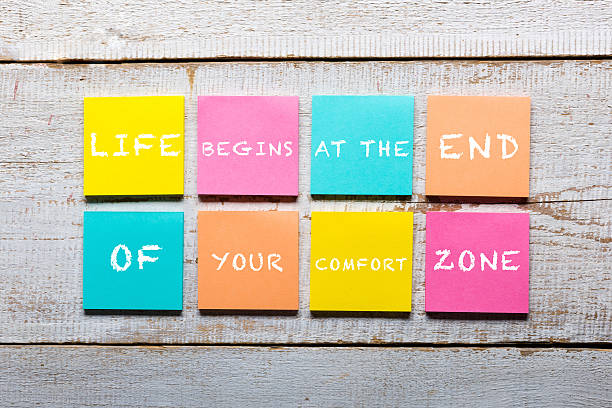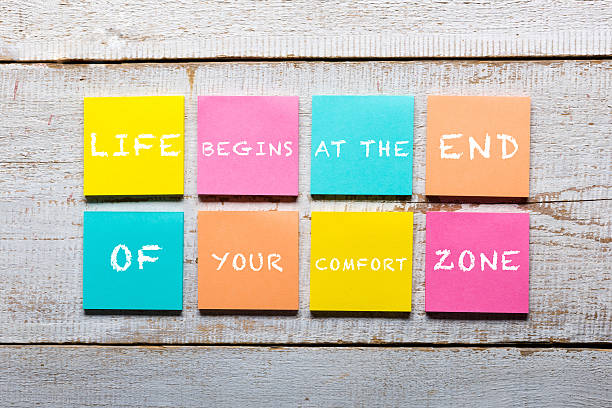Consider starting your day by pairing a new positive habit with an existing routine. For example, while brewing your morning coffee, take a moment to practice mindfulness or write a short list of things you are grateful for. This pairing technique, called “habit stacking,” leverages the power of consistency and context to help new behaviors become second nature.
Harness the momentum of your morning routine by integrating small but meaningful tasks. After brushing your teeth, dedicate five minutes to stretching or a quick workout. This not only boosts your energy levels but also reinforces the connection between current habits and new actions. Consistent practice aligns your daily rhythm with these fresh additions, effectively embedding them in your subconscious.
Break down larger goals into achievable, routine-based actions. Stack reading a chapter of a book with your lunch break or blend a quick language lesson with your evening commute. By weaving new habits into established patterns, you increase your chances of maintaining them long-term. Such integrations should reflect your personal lifestyle and existing commitments, ensuring that these new habits don’t overwhelm but rather complement your day.
Furthermore, leveraging technology can aid your progress. Use timers or reminder apps to prompt you to engage in your new habits at established times. Such prompts help to create a consistent structure, reinforcing the habitual nature of the activities over time. By cleverly using your environment and existing routines, you cultivate a fertile ground for growth and development, turning small daily actions into transformative habits.
Developing a Custom Habit Stacking Plan

Identify the specific habits you want to establish and pick a reliable anchor, such as a habit you already perform daily without fail. Choose familiar actions like brushing your teeth or making coffee. These anchors provide a launching point for your new routine.
List your desired habits. Write them down and categorize them by theme or time of day to maintain focus. For example, morning routines can include drinking a glass of water, exercising, or planning your day in a journal.
Pace yourself. Introduce one new habit at a time over a manageable period, allowing for gradual adaptation. Adding too many changes quickly can lead to overwhelm and inconsistency.
Plan for obstacles and prepare alternate actions. For instance, if your schedule disrupts your usual workout, have a backup in mind, like doing a short at-home routine.
Track your progress. Use a habit tracker to monitor your achievements and stay motivated. Regularly reviewing your progress helps maintain accountability and discover patterns that aid improvement.
Reward progress. Treat yourself when you achieve milestones, reinforcing positive behavior. Rewards can be as small as enjoying a favorite snack or spending time on a hobby.
Continually refine your plan based on feedback. Adjust your strategies as needed, embracing flexibility to suit your evolving goals and lifestyle changes.
Identifying Keystone Habits for Maximum Impact
Focus on discovering habits with cascading benefits to transform multiple aspects of your life. Research by Charles Duhigg found that certain habits can act as keystones, initiating a positive domino effect. For example, regular exercise not only improves physical health but also boosts mood, encourages better eating, and enhances productivity.
Examine your current routine for moments when you feel the most productive or happiest. These instances often hint at existing beneficial habits that could be expanded. Are you most energized after a morning workout or a short meditation session? These could be potential keystone habits to build upon.
Next, assess the interconnectedness of habits. A small change in one area can significantly influence another. For instance, committing to a consistent sleep schedule can improve focus and reduce stress, indirectly benefiting work performance and relationships.
Start small to ensure sustainability. Choose a single keystone habit to develop, and notice how it affects your daily routine. Track the changes it prompts in other areas, and adjust your approach when necessary.
Finally, believe in the process. Celebrate small wins as your new keystone habit leads to a broader transformation. Over time, watch as these micro-adjustments forge a holistic improvement in your lifestyle.
Aligning New Habits with Pre-Existing Routines
Choose a specific action you already do daily, like brushing your teeth, as an anchor for the new habit. For instance, if you’re aiming to meditate regularly, link it to your morning routine by meditating right after brushing your teeth. This connection helps the new habit become more automatic.
Prioritize consistency over intensity. Commit to small, manageable tasks each day rather than all-out efforts that could lead to burnout. If you want to read more, integrate just ten minutes of reading into your lunch break consistently. Over time, this adds up without overwhelming your day.
Use visual cues to reinforce the linkage. Place reminders like sticky notes or visual markers at strategic locations. If your goal is to hydrate more, place a water bottle next to your coffee maker. This way, while preparing your coffee each morning, you’ll naturally remember to drink water.
Leverage technology effectively by setting reminders on your phone or using habit-tracking apps. Align these digital nudges with specific times in your routine. If you’re developing a habit of writing gratitude, schedule a daily reminder that coincides with your dinner preparation, allowing a seamless integration with relaxing end-of-day activities.
Finally, reflect on your progress regularly to help solidify the new habit. Set aside a few minutes weekly to assess how well the habit aligns with your routine. This reflection not only boosts your motivation but uncovers adjustments needed to ensure lasting change.
Setting Clear Triggers and Anchor Points
Identify a specific action or event in your daily routine that can serve as a consistent trigger for your new habit. This could be as simple as brewing your morning coffee or brushing your teeth. By anchoring your new habit to an existing routine, you create a reliable cue that prompts action. For example, if you want to build a habit of stretching, associate it with the moment you finish breakfast. This consistency leverages your brain’s natural tendency to connect sequences, making the transition to the new habit smoother.
When choosing your trigger, ensure it’s precise and recognizable. Instead of a vague notion like “in the morning,” use a concrete event such as “immediately after switching off the alarm.” Such clarity reduces decision fatigue and enhances the likelihood of successful habit stacking. A well-defined anchor point minimizes the cognitive load, ensuring the habit becomes an automatic response over time.
Consider linking a new habit with an activity you enjoy. If reading is your pleasure, use it as a reward after completing the desired habit. This creates a positive feedback loop, reinforcing both behaviors. As you master one habit stack, progressively introduce new ones, maintaining the chain of reliable triggers and anchor points. This systematic approach gradually builds a sustainable and integrated routine.
Measuring Progress and Adjusting Strategies
Clearly define what success looks like for each habit. Create measurable goals that specify what you aim to achieve within a certain timeframe. Use a tracking system like a habit journal or a digital app to log your actions consistently.
- Set weekly reviews. Spend a few minutes at the end of each week reflecting on your progress. Identify which habits are sticking and which are proving challenging.
- Analyze setbacks without judgment. Understand if external factors or unrealistic goals hindered your progress. Adjust your objectives if necessary, ensuring they remain attainable and realistic.
- Seek feedback from peers or mentors. They can provide valuable insights and suggest tweaks that can enhance your strategy.
- Celebrate small victories. Recognizing progress, even if minor, boosts motivation and reinforces positive behaviors.
- Revise your habit stacking plan every month. As you evolve, so should your goals and strategies. Incorporate what works and discard methods that don’t contribute effectively.
Adaptability is key. Stay flexible and adjust your tactics based on real-world feedback and experience, ensuring that your habit stacking continues to lead you toward your desired outcomes.
Building a Sustainable Productivity Routine

Integrate small but consistent habits into your daily schedule and watch your productivity soar. Begin by prioritizing tasks: each day, list three main goals you want to achieve. This focus helps eliminate distractions and boosts efficiency.
Next, employ the 25-minute work technique: work intensely for 25 minutes, then take a 5-minute break. This structured approach enhances concentration and prevents burnout.
- Mornings: Include a brief exercise routine to invigorate your body and mind. Even a 10-minute walk can stimulate creativity and help you approach tasks with renewed energy.
- Midday: Schedule a quick review of your progress and adjust plans if necessary. This reflection ensures you stay on track and meet your end-of-day goals.
- Evenings: Dedicate time for winding down and preparing for tomorrow. A simple activity like jotting down tomorrow’s goals can set a positive, organized tone for the coming day.
Incorporate these practices naturally and adapt them to fit your lifestyle for long-term success. Consistency and flexibility are key in creating a routine that drives productivity without feeling overwhelming.
Prioritizing Tasks to Enhance Productivity
Begin by clearly defining your tasks and categorizing them based on urgency and importance. Utilize the Eisenhower Box to separate tasks into four categories:
- Urgent and Important: These tasks require immediate attention. Aim to complete them first.
- Important but Not Urgent: Schedule these tasks to prevent them from becoming urgent.
- Urgent but Not Important: If possible, delegate these tasks to free up your time for more impactful work.
- Neither Urgent nor Important: Consider removing these tasks from your list or minimizing time spent on them.
After categorizing, ensure each task has a clear, actionable step. Break complex tasks into smaller, manageable subtasks. This makes it easier to start and track your progress.
Set specific time limits for each task to maintain focus and avoid perfectionism. Use techniques like the Pomodoro Technique, which involves working for a set period (usually 25 minutes) followed by a brief break.
Review your task list at the end of each day, adjusting priorities and planning for the next day. This daily evaluation helps maintain clarity on evolving tasks and priorities.
Regularly refocus on high-impact tasks that align with your long-term goals. Incorporate regular reflection to ensure your actions contribute to broader objectives, enhancing the overall effectiveness of your priority strategy.
Incorporating Breaks to Maintain Momentum
Schedule regular short breaks between tasks to keep your energy levels high. Apply the Pomodoro Technique: work for 25 minutes, followed by a 5-minute break. This method enhances concentration and prevents burnout. During breaks, avoid screen time; instead, stretch, walk, or hydrate. These activities refresh the mind and body, facilitating better focus when you resume work.
Understand your peak productivity hours by tracking your energy patterns over a week. Tailor your breaks to align with these periods, ensuring maximum efficiency. Consistent rest enhances cognitive functioning and decision-making skills.
| Activity | Recommended Break Frequency | Break Duration |
|---|---|---|
| Deep Work (Focused Tasks) | Every 60-90 minutes | 10-15 minutes |
| Routine Tasks | Every 30-45 minutes | 5-10 minutes |
| Creative Work | As needed by energy levels | 5-15 minutes |
Customize break activities to your interests, making them enjoyable to ensure you return revitalized. Regularly reassess and adjust your break strategy to suit changing tasks and personal needs. By investing time in breaks, you will enhance productivity and sustain motivation towards your goals.
Balancing Work and Personal Habits
Identify key triggers in your work environment that can seamlessly align with personal habits. For example, set a calendar reminder for quick meditation or stretching exercises right after a virtual meeting ends. Such activities rejuvenate and boost productivity for subsequent tasks. Use digital tools like productivity apps to block specific times for personal habits, ensuring work commitments do not interfere. Choose one work task that can act as a cue for a personal habit, like preparing a healthy snack while waiting for files to upload.
Integrate micro-habits that can be achieved within a workplace setting, such as drinking water every hour. Keep a refillable bottle on your desk for convenience. Pair a work habit with a personal habit, such as reviewing your task list while preparing your lunch. This not only saves time but also consistently reinforces personal goals during work hours.
Balance work and personal habits by setting clear boundaries between work time and personal time. Dedicate the first 10 minutes of your workday to prioritize tasks, and the last 10 minutes to reflect on personal achievements of the day. Using physical cues like changing into comfortable clothing after work hours can mentally separate the two spheres.
Using Visual Cues to Reinforce New Behaviors
Place physical reminders in prominent locations to trigger desired habits. Stick colorful post-it notes on your bathroom mirror to prompt you to floss or stretch before bed. Use a dedicated area on your refrigerator for recipes or meal prep plans, encouraging healthier eating choices each day. These tangible reminders serve as simple prompts and make new behaviors easier to implement.
Create a visual checklist that tracks your progress. Break down complex habits into manageable daily tasks, and mark your accomplishments as you go. This strategy not only provides a sense of achievement but also motivates you to maintain consistency. Keep a whiteboard in your workspace or kitchen for easy access and visibility.
| Visual Cue | Behavior | Location |
|---|---|---|
| Post-it Notes | Flossing | Bathroom Mirror |
| Recipe Board | Healthy Eating | Refrigerator |
| Progress Checklist | Project Management | Home Office |
Integrate visual cues seamlessly into your environment. Keep your gym clothes ready and visible by laying them on a chair or near your bed. This simple adjustment can encourage morning workouts. For reading habits, position your book or e-reader on your pillow or nightstand, making it convenient to dedicate a few minutes to reading before sleep. By reducing friction in your daily routine, these subtle nudges help form lasting habits.
Q&A:

How can I ensure that the new habits I am trying to stack actually become a permanent part of my routine?
To make your new habits a lasting part of your routine, focus on linking them to strong, established habits you already perform. Start with small, manageable changes and progressively build on them. Consistency is critical, so try to structure your environment and schedule to support these new behaviors continuously. Additionally, use techniques such as positive reinforcement to encourage yourself.
What is the most common mistake people make when stacking habits, and how can it be avoided?
One common mistake is attempting to stack too many habits at once, which can lead to overwhelm and inconsistency. It’s more effective to focus on integrating one new habit at a time with an already established routine. As each new habit becomes second nature, gradually introduce another one.
Can you give an example of a simple habit stack that has worked for you or others?
A straightforward and relatable habit stack is combining flossing with brushing your teeth. Since brushing is an established habit for most people, adding flossing immediately before or after can enhance dental hygiene with minimal extra effort. By linking the two, the less ingrained habit of flossing gains consistency.
How long does it generally take for a new habit to stick when using habit stacking?
While the time it takes for a habit to stick can vary widely depending on personal factors and the complexity of the habit, research suggests it can take anywhere from 18 to 254 days for a new behavior to become automatic. The key is to consistently integrate the new habit with an existing routine, which habit stacking naturally encourages.
What if my existing routines are irregular? Can habit stacking still work for me?
Yes, habit stacking can still be effective even if your routine changes day to day. Focus on identifying fixed events in your day, such as meals or waking up, which occur daily regardless of schedule. Attach new habits to these anchor points to create consistency despite fluctuations in other activities.
How can habit stacking help me incorporate new habits into my daily routine without feeling overwhelmed?
Habit stacking is a method that involves linking a new habit to an existing one. This technique makes it easier to establish new behaviors by taking advantage of the momentum and routine you already have. For example, if you want to start a new habit of meditating, you can stack it with your morning coffee routine. This way, every time you have your coffee, it’s a natural cue to sit and meditate for a few minutes. By piggybacking on a well-established habit, you lower the barrier to entry for the new habit, reducing the feeling of being overwhelmed. Over time, this approach makes the new habit feel like a natural part of your routine.
What are some common mistakes people make when trying to implement habit stacking, and how can they be avoided?
One common mistake people make with habit stacking is attempting to stack too many new habits at once. This can lead to feeling overwhelmed and may cause the entire effort to fail. Instead, start with stacking just one new habit at a time to ensure success. Another mistake is not choosing a specific cue or existing habit that naturally leads into the new one. The key to effective habit stacking is choosing an established habit that can seamlessly incorporate the new behavior. To avoid these pitfalls, focus on gradual progress and clearly define your triggers and actions. Stick to building on consistent, everyday tasks and not events that happen erratically. This structured approach boosts the likelihood of the new habits becoming a permanent part of your routine.

